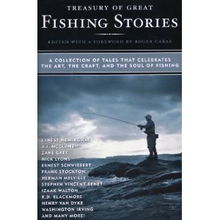Content:
Fishing, an ancient pastime, has been captivating anglers for centuries. Whether you are a seasoned fisherman or a beginner, mastering the art of fishing involves understanding various techniques and tricks. One such crucial skill is finding the bottom, which is essential for successful fishing. In this article, we will delve into different fishing methods and share valuable tips and tricks on how to find the bottom effectively.
Understanding the Importance of Finding the Bottom
Before we dive into the techniques, it's essential to understand why finding the bottom is so important. The bottom of a body of water can be a rich hunting ground for fish, as it offers numerous hiding spots and a source of food. By knowing the depth at which the fish are located, you can present your bait or lure more effectively, increasing your chances of a successful catch.
Types of Fishing Methods

There are various fishing methods that can help you find the bottom. Let's explore some of the most common ones:
Spinnerbait Fishing: Spinnerbaits are versatile lures that work well in various conditions. To find the bottom using a spinnerbait, cast the lure into the water and retrieve it at a slow pace. Pay close attention to the weight's movement. When it stops, it indicates that you have reached the bottom. Adjust your casting and retrieval technique accordingly.
Jigging: Jigging is an excellent technique for targeting bottom-dwelling fish. Attach a jig to your line and drop it to the desired depth. Once it reaches the bottom, start lifting and dropping the lure in short, jerky motions. This mimics the movement of a struggling baitfish and can trigger strikes from fish lurking beneath.
Bottom Bouncing: Bottom bouncing involves dragging a lure along the bottom to cover more ground. Use a heavy-duty rod and a sinker to keep your lure close to the bottom. Move the lure slowly, feeling for any resistance or changes in the line's tension that might indicate a fish.
Drop Shotting: Drop shotting is a finesse technique that works well in clear water conditions. Attach a small weight to your line and let it sink to the bottom. Then, drop a soft plastic lure on the other end of the line and slowly twitch it. This method is highly effective for targeting suspended fish.
Carolina Rigging: Carolina rigging is a method used to fish deeper water. Attach a heavy weight to your line, followed by a leader and a soft plastic lure. Let the weight sink to the bottom, and then gently move the lure in a horizontal motion along the bottom.
Tips and Tricks for Finding the Bottom
Now that you have an idea of the various methods, here are some tips and tricks to help you find the bottom more effectively:
Use a Quality Graphite Rod: A good graphite rod will help you detect even the slightest changes in the line's tension, which can indicate the presence of fish.
Choose the Right Line: The type of line you use depends on the fishing method and the species you're targeting. Monofilament, fluorocarbon, and braided lines all have their advantages. For bottom fishing, a heavy-duty fluorocarbon line is often preferred for its sensitivity and strength.
Use a Fish Finder: A fish finder is an invaluable tool for locating fish and understanding the underwater terrain. It can help you identify structure, drop-offs, and other features that can hold fish.
Experiment with Depths: Fish can be found at various depths, so experiment with different retrieves and presentations to see what works best. Start with a shallow depth and gradually increase the depth until you find the fish.
Be Patient: Finding the bottom can sometimes be a slow process. Be patient and take your time to feel the bottom and adjust your technique accordingly.
Listen to Your Equipment: Pay attention to the sounds your equipment makes. A change in the sound of the line hitting the bottom can indicate a fish nearby.
In conclusion, mastering the art of finding the bottom is a crucial skill for any angler. By understanding the different fishing methods and applying the right techniques, you can increase your chances of success on the water. Remember to be patient, experiment with different depths, and always listen to your equipment. Happy fishing!












